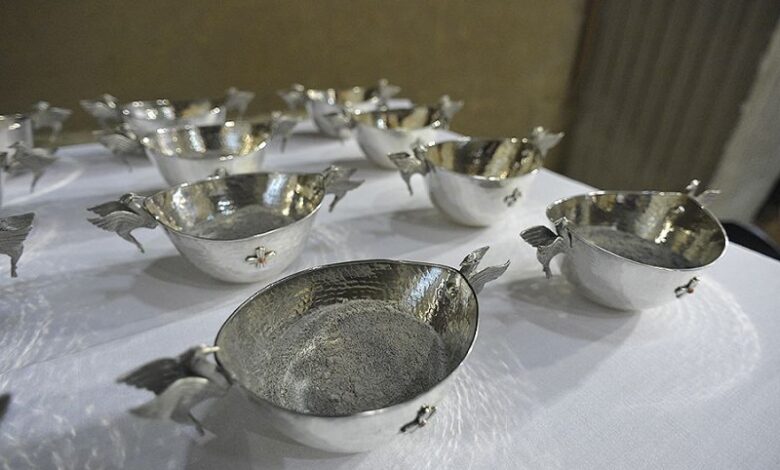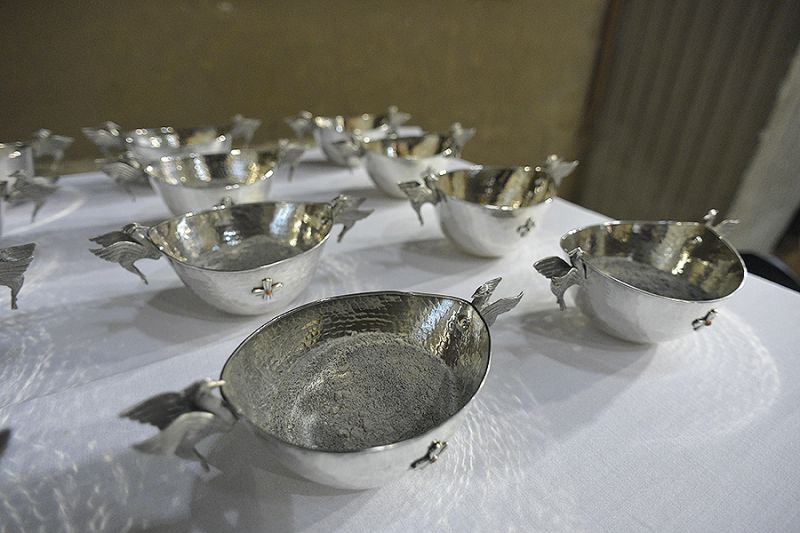10 important things to know about Ash Wednesday

 Ashes at Sant'Anselmo all'Aventino in Rome. / Credit: Vatican Media
Ashes at Sant'Anselmo all'Aventino in Rome. / Credit: Vatican Media ACI Prensa Staff, Feb 14, 2024 / 10:20 am (CNA).
Ash Wednesday begins the holy season of Lent, which is structured to spiritually prepare to walk with the Lord through his passion and celebrate his resurrection on Easter Sunday. Below are 10 important things to know about Ash Wednesday and its significance.
1. Ash Wednesday is the first day of Lent.
Ash Wednesday begins the 40 days in which the Church calls the faithful to conversion and to truly prepare to live the mysteries of the passion, death, and resurrection of Jesus Christ.
The Roman Missal, which prescribes the ritual for Ash Wednesday, explains that at Mass the ashes made from the palms blessed on Palm Sunday of the previous year are blessed and placed on the foreheads of the faithful.
2. The use of ashes developed over the years.
The tradition of placing ashes on penitents dates back to the early Church. Back then people placed the ashes on their heads and appeared before the community with a “penitential habit” to receive the sacrament of reconciliation on Holy Thursday. Starting in the 11th century, the Church of Rome placed ashes on all the faithful who would come forward at the beginning of this time.
3. Ashes remind us of the need for God’s mercy.
Ashes are a symbol. Their function is described in No. 125 of the Directory on Popular Piety and Liturgy, a document published by the Dicastery for Divine Worship and the Discipline of the Sacraments:
“In the Roman rite, the beginning of the 40 days of penance is marked with the austere symbol of ashes, which are used in the liturgy of Ash Wednesday. The use of ashes is a survival from an ancient rite according to which converted sinners submitted themselves to canonical penance. The act of putting on ashes symbolizes fragility and mortality, and the need to be redeemed by the mercy of God. Far from being a merely external act, the Church has retained the use of ashes to symbolize that attitude of internal penance to which all the baptized are called during Lent. The faithful who come to receive ashes should be assisted in perceiving the implicit internal significance of this act, which disposes them toward conversion and renewed Easter commitment.”
4. Ashes have more than one meaning.
The word “ashes” represents the product of the combustion of something by fire. This takes on a symbolic connotation of death, the fleeting quality of temporal things, but also of humility and penitence.
Ashes, as a sign of humility, remind the Christian of his origin and his end: “the Lord God formed the man out of the dust of the ground” (Gn 2:7); “until you return to the ground, from which you were taken” (Gn 3:19).
5. Ashes are made from palms used on Palm Sunday.
Per the instructions of the Roman Missal, ashes are typically supposed to be made from last year’s Palm Sunday palm branches.
These branches are then burned down into a fine powder and, in the United States, are mixed with holy water or chrism oil to create a light paste.
6. The ashes are placed on the forehead at the end of the homily.
The distribution of ashes takes place at Mass at the end of the homily, and laypeople are allowed to assist the priest. The ashes are placed on the forehead making the sign of the cross while the minister says: “Remember you are dust, and to dust you shall return” or “Repent and believe in the Gospel.”
The person receiving the ashes then goes back to his or her pew in silence, meditating on the words that were spoken.
7. Ashes can also be distributed without Mass.
When there is no priest, the faithful can receive ashes without a Mass, but this is not the norm. However, in such a case it is recommended that the distribution of ashes be preceded by a Liturgy of the Word.
It is important to remember that like all sacramentals, ashes can only be blessed by a priest or deacon.
8. Ashes can be received by non-Catholics.
Anyone can receive this sacramental, even non-Catholics. As the Catechism of the Catholic Church states in No. 1670: “Sacramentals do not confer the grace of the Holy Spirit in the way that the sacraments do, but by the Church’s prayer, they prepare us to receive grace and dispose us to cooperate with it.”
9. It is not obligatory to receive ashes.
Ash Wednesday is not a holy day of obligation and therefore receiving ashes is not obligatory. However, it is always recommended to attend Mass.
10. On Ash Wednesday fasting and abstinence are mandatory.
On Ash Wednesday, fasting and abstinence are mandatory — as on Good Friday — for those 18–59 years of age. Outside of those limits it is optional. The U.S. Conference of Catholic Bishops explains that “fasting on these days means we can have only one full, meatless meal. Some food can be taken at the other regular mealtimes if necessary but combined they should be less than a full meal. Liquids are allowed at any time, but no solid food should be consumed between meals.”
Abstinence from eating meat is mandatory from the age of 14. All Fridays of Lent are also required days of abstinence. This also applies to the other Fridays of the year, although depending on the country it can be replaced by another type of mortification or offering such as praying the rosary.
This story was first published by ACI Prensa, CNA’s Spanish-language news partner. It has been translated and adapted by CNA.






